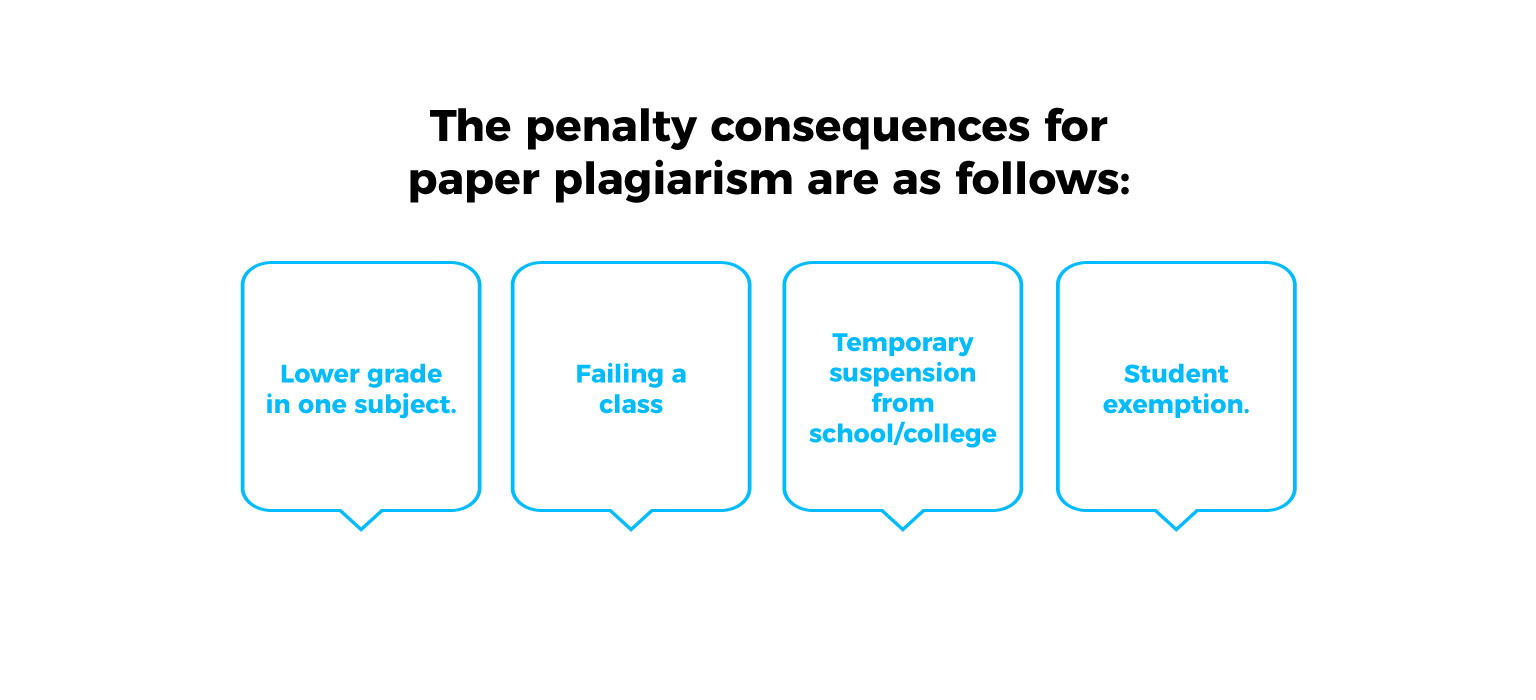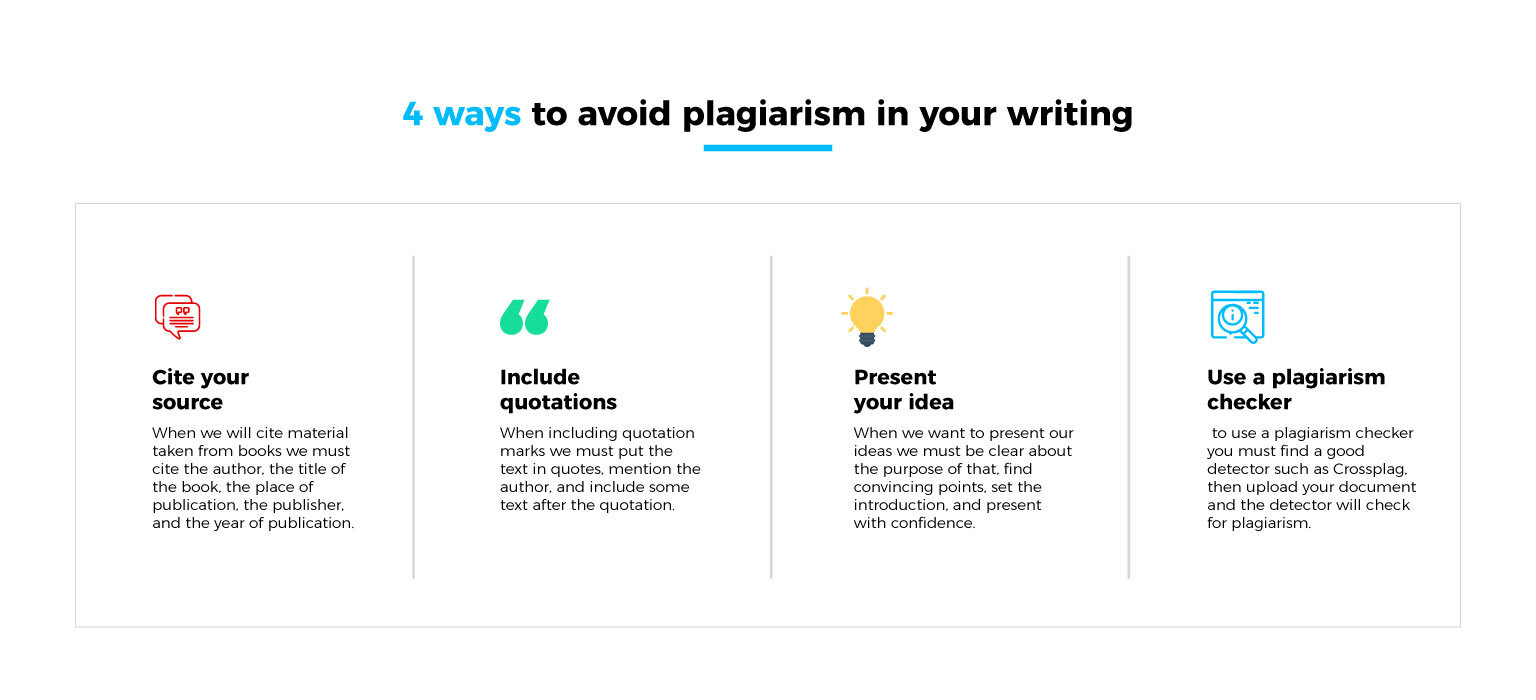Academic work’s credibility is seriously compromised by plagiarism. Writing essays, research papers, and other types of projects is something that students frequently have to do.
Professors ask them to do those tasks to evaluate their knowledge of the material, improve critical-thinking abilities, and increase their capacity for clear communication, not copying and pasting. There will be penalties or consequences if students plagiarize and steal someone’s writing.
What is plagiarism?
So, what is plagiarism, then? Plagiarism is the act of taking someone else’s words or ideas and presenting them as your own without giving them the proper credit. It includes actions like directly copying and pasting text from a source or paraphrasing someone else’s writing without properly citing the original author.
It is heavily frowned upon in academic and professional arenas and can have serious consequences. Let’s take a look at 5 different types of plagiarism to understand the concept better.
-
Direct plagiarism
This is the most obvious form of plagiarism (but it happens a lot), where a student copies and pastes text directly from a source into their work without citation.
For example, if students copy and paste an entire paragraph from a Wikipedia article into their essay without citation, they are committing direct plagiarism.
-
Self-plagiarism
This happens when a student submits work they have previously completed or parts of it as if it were new work.
For instance, if a student submits an essay they previously wrote for another class without the instructor’s permission, it is considered self-plagiarism which students should be aware of.
-
Paraphrasing without citation
This is another common form at college. This is when a student paraphrases someone’s work without properly attributing it. A student would be plagiarizing if they read an article on a subject, then rewrote it using different terms but failing to cite the original source.
-
Improper citation
When a student uses a reference in their paper without properly attributing the source, it is called an improper citation. Students must give the source due credit, such as the author’s name, date, and page number, depending on the citation style.
For example, if you decide to use our article as your resource, you need to give credits (APA style),
—–your sentence—– (Crossplag, 2023).
- Copyright plagiarism
This type occurs when a student uses someone else’s work, such as an image or graph, without permission or without giving proper attribution. For example, if students include a chart from a journal article in their paper without permission or citation, they commit plagiarism.

The importance of Plagiarism
While there are many useful tools for students to write essays or papers, it is important to remember that plagiarism is a serious issue.
One of the main reasons why avoiding it is that it is a type of intellectual theft. When students steal and present someone else’s ideas as their own, they cheat the original author out of their rightful credit and violate ethical standards. Long-term repercussions of this dishonesty may significantly impact their academic and professional careers.
Depending on the seriousness of the conduct, plagiarism in an academic setting may result in various penalties. Plagiarism can, at its most basic level, lead to a lower grade on an assignment or even to course failure. More challenging situations may lead to suspension or even expulsion from the facility. These repercussions may significantly impact students’ academic records and capacity to pursue further education or employment.
Another reason why plagiarism is crucial for students is that it prevents them from refining their critical thinking abilities. They need to be able to evaluate and combine
data from various sources if they want to flourish in the academic world. When plagiarizing, they just repeat someone else’s ideas verbatim without thinking critically about the source material or developing their own thoughts. It will not help them grow as students.
Lastly, knowing how to avoid plagiarism might help students build critical abilities they will need in their future employment. Plagiarism is also a major issue in the working sector, not only for students. For every career, correctly citing sources, paraphrasing material, and expressing creative ideas are essential. Students will be more equipped for their future occupations if they acquire these abilities early in their educational careers.
Why do students plagiarize?
Plagiarism has become a problem for educators, students, and academic institutions because it violates academic integrity and undermines the educational process, but why do students still commit it? There are several potential reasons why they plagiarism.
-
Lack of understanding
Many students might not be familiar with plagiarism, correct source citation, or information paraphrasing. As a result, they could unwittingly copy material by neglecting to paraphrase it properly or failing to credit their sources appropriately. Some students might not have received instruction on citing sources correctly, or they could have forgotten how.
-
Lack of time
Students have a lot on their plates in today’s fast-paced society. They need to balance obligations to their families, friends, partners, and employers. Consequently, some students could experience stress and find it difficult to finish their projects on time. They could turn to plagiarism as a quick and simple solution to do the assignment in order to save time.
-
Social Pressure
Another reason why students plagiarize is the pressure to succeed academically. Some students could experience tremendous pressure to do well academically, keep their GPA high, and advance their academic careers. This pressure may be self-imposed in some circumstances or come from classmates or parents. Some students may feel pressured to plagiarize to make the deadline or get the desired
grade to live up to these expectations.
-
Lack of confidence
Some students also commit plagiarism when they think the assignment is too challenging. The task may seem impossible for students unsure of their skills to accomplish the needed standard. As a result, they could use it to avoid getting a bad score or failing the task entirely.
-
Disinterest in the assignment
Some students plagiarize when they do not perceive the value in their homework. Some students could feel that the assignment is unrelated to their academic or professional careers. Because of this, students might not take their assignments seriously and turn to plagiarism to finish the work fast.

How to avoid plagiarism?
Plagiarism is a serious academic offense with many repercussions, including failing a course and being expelled from school. Academic integrity and achievement both depend on avoiding it. We’ll look at some of the greatest strategies for preventing plagiarism and making sure you uphold your commitment to academic honesty.
-
Understanding Plagiarism
Knowing what it is and how to avoid it is crucial before you begin writing. As we mentioned before, when you utilize someone else’s work without properly citing the original author, you have committed plagiarism. It involves taking ideas from other sources without citing them, as well as paraphrasing, summarizing, and copying and pasting someone else’s work.
-
Use proper citation
Using appropriate citations is the best technique to stay away from plagiarized work. If you ever utilize another person’s work, properly credit them using a citation style like MLA, APA, or Chicago. Citations assist you in avoiding it while also acknowledging the original source and enabling the reader to validate your study.
-
Paraphrase and summarize properly
Paraphrasing and summarizing are critical skills for avoiding it. When you use someone else’s work, make sure to rephrase it in your own words and give credit to the original source. However, be careful not to change the original meaning of the work or paraphrase it too closely, which can still be considered plagiarism.
-
Use plagiarism checkers
You may verify your work for plagiarism using a plagiarism checker. It can identify any similarities between your work and the millions of other sources they compare it to. It is safe to check your work before you submit it.
-
Plan and manage your time effectively.
Students who struggle to meet deadlines may turn to copying and pasting, which might result in plagiarism. You can plan your assignments well in advance and use time management techniques to prevent this. By doing so, you will not need to commit plagiarism and create excellent work.
Conclusion
Students should take plagiarism very seriously since it is an extremely serious issue. It violates standards of academic integrity, impedes learning, and has the potential for long-term effects. They will be better prepared for academic achievement and future professions if they take the time to understand plagiarism and how to avoid it. Academic integrity is not just about avoiding plagiarism but also about being honest, responsible, and ethical in all aspects of your academic career.

Agnesa is crazy about math and has won lots of prizes. Although her main gig is being a full-stack developer, she also likes to write about topics she knows really well.
But, Agnesa isn’t just about numbers and algorithms.
When she’s not crunching code or weaving words, you’ll find her conquering mountains with her trusty hiking boots!

